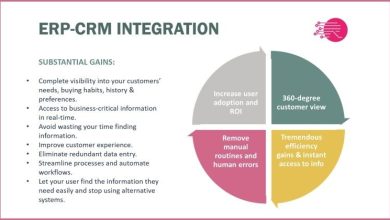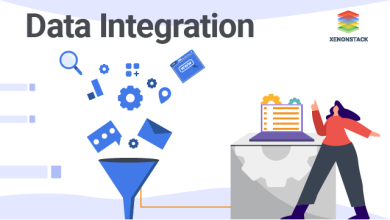Strengthen Your Due Diligence: A Guide for Portfolio Managers

Portfolio managers are responsible for managing and overseeing investment portfolios. Due diligence is an essential process in portfolio management that helps investors make informed decisions. It involves researching potential investments, assessing risk, and determining valuation and return potential. In today’s fast-paced investment world, using a portfolio management tool or software can improve due diligence and help investors make better-informed decisions.
In this blog post, we’ll explore how portfolio managers can improve their due diligence process by leveraging technology and portfolio management software. We’ll outline the steps for conducting effective due diligence and discuss best practices for improving due diligence. We’ll also share a case study of how a portfolio management platform improved due diligence and discuss the benefits of using this software.
Steps for Conducting Effective Due Diligence
Before investing in any asset, it’s essential to conduct thorough research and analysis. Here are the steps for conducting effective due diligence:
Define Your Investment Objectives
The first step in due diligence is to define your investment objectives. What are you hoping to achieve through this investment? Are you looking for income, growth, or a combination of both? Understanding your investment objectives will help you determine the types of assets that best align with your goals.
Research Potential Investments
Once you’ve defined your investment objectives, you’ll need to research potential investments. This involves conducting a variety of analyses, including:
- Fundamental Analysis – Fundamental analysis involves examining the financial health and performance of a company. This includes analyzing the company’s financial statements, such as the balance sheet, income statement, and cash flow statement. Fundamental analysis also involves looking at other factors, such as the company’s management team, industry trends, and economic conditions.
- Technical Analysis – Technical analysis includes using charts and other tools to analyze market trends and price patterns. This can help you identify potential entry and exit points for an investment.
- Market Analysis – Examining broader market trends and conditions. This includes analyzing macroeconomic indicators such as GDP, interest rates, and inflation, as well as industry-specific factors such as supply and demand.
Conduct Company Analysis
After conducting a thorough analysis of potential investments, it’s essential to conduct a company analysis. This involves assessing the financial health and performance of the specific companies in which you’re considering investing. The company analysis includes:
- Financial Analysis – Analyzing a company’s financial statements to determine its financial health and performance. This includes examining revenue growth, profitability, and cash flow.
- Industry Analysis – Examining broader industry trends and conditions. This involves analyzing industry-specific factors such as regulatory changes, competition, and market saturation.
- Management analysis – Assessing the quality of a company’s management team. This can be examining their experience, track record, and decision-making abilities.
Identify And Assess the Risk
Identifying and assessing risk is an essential part of the due diligence process. This involves identifying potential risks and developing strategies to mitigate them. Some common types of risks include market risk, credit risk, and operational risk.
Determine Valuation And Return Potential
Finally, it’s essential to determine the valuation and return potential of potential investments. This involves examining a variety of factors, including financial health, industry trends, and management quality, to determine the potential value and return of an investment.
Best Practices for Improving Due Diligence
While the due diligence process is critical, it can be time-consuming and complex. Here are some best practices for improving due diligence:
Leverage Technology And Portfolio Management Software
One of the best ways to improve due diligence is to leverage technology and portfolio management software. Portfolio management software can help you automate and streamline the due diligence process, making it more efficient and effective. Some benefits of portfolio management software include the following:
- Improved Accuracy – Portfolio management software can help you reduce errors and ensure that your analysis is accurate and reliable.
- Increased Efficiency – It helps you automate repetitive tasks and streamline your workflow, saving you time and increasing productivity.
- Enhanced Collaboration – Enables teams to collaborate more effectively, share information and insights, and make more informed decisions.
Features To Look For In Portfolio Management Software
When choosing portfolio management software, there are several key features to look for. Dashboards should be customizable, allowing you to prioritize the data that’s most important to you and create a personalized view of your portfolio. The software should be able to integrate with various data sources and financial tools, allowing you to access and analyze data from a variety of sources. It must have robust risk management tools that allow you to identify and mitigate risks, set stop-loss orders, and monitor portfolio performance. It must consist of compliance management tools that help ensure regulatory compliance and provide a transparent audit trail.
Build A Comprehensive Due Diligence Checklist
Another best practice for improving due diligence is to build a comprehensive due diligence checklist. This should include a list of all the steps you need to take and the information you need to gather when conducting due diligence. A checklist can help ensure that you don’t overlook any important information or steps in the due diligence process.
Establish A Due Diligence Team
It’s also important to establish a due diligence team. This team should include individuals with different areas of expertise, such as financial analysis, industry analysis, and risk management. By working collaboratively, the team can ensure that all aspects of the due diligence process are covered and that decisions are made based on a comprehensive analysis.
Continuously Monitor Investments
It’s essential to continuously monitor your investments. This involves regularly reviewing your portfolio performance, assessing the impact of market conditions, and updating your due diligence analysis as needed. By continuously monitoring your investments, you can identify potential issues early and take corrective action before they become major problems.
Effective due diligence is critical to the success of any investment portfolio. By following the steps outlined in this blog post and leveraging technology and a portfolio management platform, portfolio managers can improve the accuracy and efficiency of their due diligence process. By continuously monitoring investments and updating their analysis, portfolio managers can ensure that they’re making informed investment decisions that align with their investment objectives. Portfolio management software is an essential tool in today’s fast-paced investment world and can help investors stay ahead of the curve.












